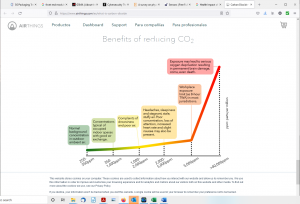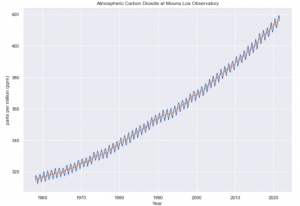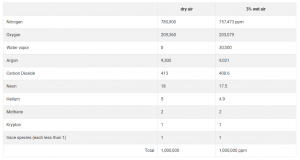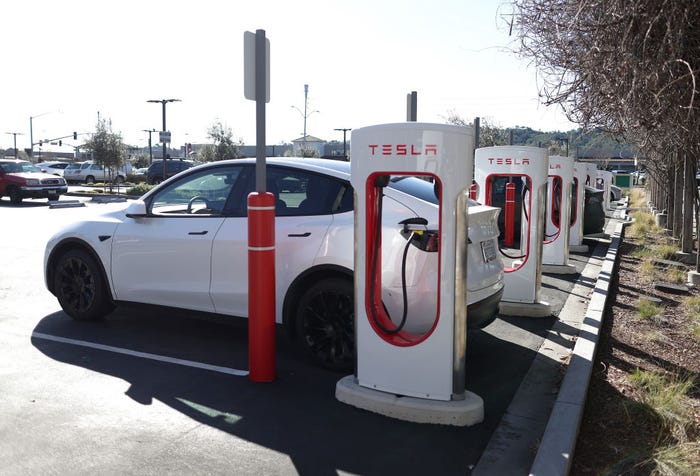Indoor Climate Change: Understanding the Air We Breathe Using Data
September 15, 2021

Sponsored Content
By Infineon Technologies (Milpitas, California); Pradyumna (P.K.) Mishra
According to the Environmental Protection Agency (EPA), the average American spends 93% of their life indoors: 87% of their life is inside buildings and another 6% of their life in automobiles. That leaves only 7% for life outside—one half of one day per week. Yet, very little of the indoor air quality, or CO2 values, either indoors, in the immediate neighborhood or at the regional level are understood. In fact, we are just beginning to understand the CO2 levels at the global level.
However, as shown in Figure 1, the detrimental impact of increasing CO2 concentration is well documented.

Figure 1. Health impact of CO2 concentrations. Source: Airthings
Data is critical to understand and appropriately respond to any situation. As W. Edwards Deming, the renowned proponent of statistical quality control, said, “Without data, you’re just another person with an opinion.” This blog will explain CO2 from a data-science perspective and show how data can provide insights to understand and proactively control air quality, especially indoors.
MEASUREMENT OF CO2 DATA
In 1957 Dave Keeling, who was the first to make accurate measurements of CO2 in the atmosphere, chose a site high up on the slopes of the Mauna Loa volcano because he wanted to measure CO2 in air masses that would be representative of much of the Northern Hemisphere, if not the globe. The Hawaii observatory is surrounded by many miles of bare lava, without any vegetation or soil, providing an opportunity to measure “background” air, also called “baseline” air, which is defined as having a CO2 mole fraction representative of an upwind fetch of hundreds of kilometers (km). Nearby emission or removal of CO2 typically produces sharp fluctuations in space, time, and mole fraction. Figure 2 shows the historic CO2 data for several decades.

Figure 2. The increasing amount of atmospheric CO2 measured at the Mauna Loa Observatory. Source: NOAA
As part of his research, Keeling introduced the principle of a rigorous calibration strategy that is still employed today. Measurement of data from this one sensor led to the advent of climate change science. The measurement of this difference provides crucial quantitative information about the emissions and removals of CO2.
INDOOR CO2 MEASUREMENTS
CO2 values vary significantly indoors, within neighborhoods, regionally, nationally, as well as globally. Yet, the absolute value of CO2 is not that obvious or easy to measure. Most people assume that the “concentration” of CO2 in air is measured, since that terminology is commonly used in communications with the general public. The quantity that is actually determined is accurately described by the chemical term “mole fraction.” The mole fraction is defined as the number of CO2 molecules in a given number of molecules of air, after the removal of water vapor. The concentration change produced by the addition of water vapor can be greater than the CO2.
The concentration depends on many factors, such as water vapor/humidity, temperature, environmental plants/wind, as well as indoor and outdoor pollution. Even further, the amount of CO2 is higher in the Northern than in the Southern Hemisphere because of the combustion of coal, oil, and natural gas. The complexities involved in measuring and comparing CO2 values from two different locations involves teasing out such complexities making Data Science and Machine Learning (ML) ideal. Figure 3 shows the difference in CO2 concentration in dry versus wet air.

Figure 3. CO2 concentration increases in dry air compared to wet air. Source: NOAA
Part 2 of this blog will explore the type of insights that CO2 measurements can provide. If you are interested in learning more about CO2 sensors and how to track your environment, visit the Infineon website.
You May Also Like




.png?width=300&auto=webp&quality=80&disable=upscale)
.png?width=300&auto=webp&quality=80&disable=upscale)
.png?width=300&auto=webp&quality=80&disable=upscale)